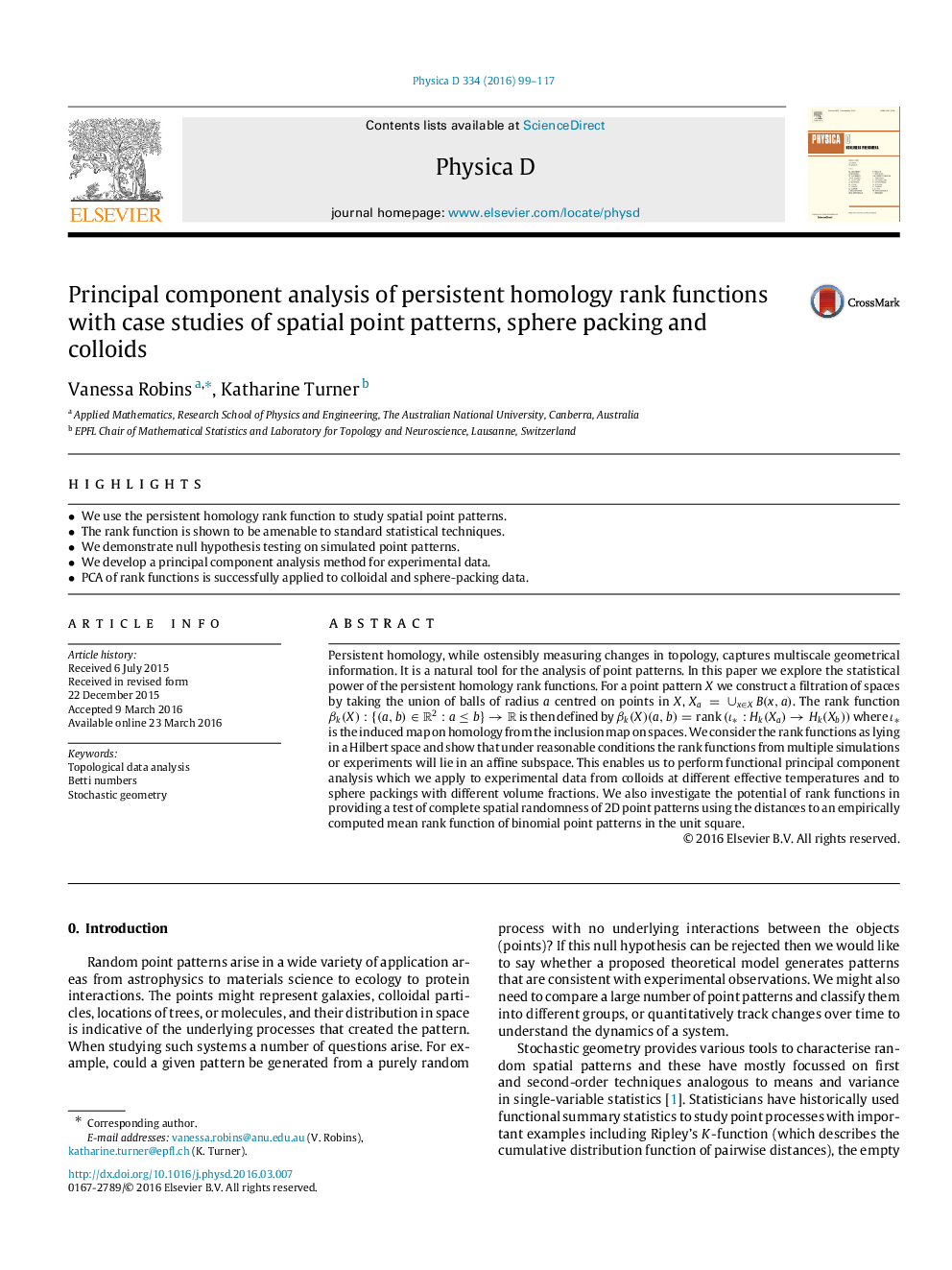| Article ID | Journal | Published Year | Pages | File Type |
|---|---|---|---|---|
| 5500380 | Physica D: Nonlinear Phenomena | 2016 | 19 Pages |
Abstract
Persistent homology, while ostensibly measuring changes in topology, captures multiscale geometrical information. It is a natural tool for the analysis of point patterns. In this paper we explore the statistical power of the persistent homology rank functions. For a point pattern X we construct a filtration of spaces by taking the union of balls of radius a centred on points in X, Xa=âªxâXB(x,a). The rank function βk(X):{(a,b)âR2:aâ¤b}âR is then defined by βk(X)(a,b)=rank(ιâ:Hk(Xa)âHk(Xb)) where ιâ is the induced map on homology from the inclusion map on spaces. We consider the rank functions as lying in a Hilbert space and show that under reasonable conditions the rank functions from multiple simulations or experiments will lie in an affine subspace. This enables us to perform functional principal component analysis which we apply to experimental data from colloids at different effective temperatures and to sphere packings with different volume fractions. We also investigate the potential of rank functions in providing a test of complete spatial randomness of 2D point patterns using the distances to an empirically computed mean rank function of binomial point patterns in the unit square.
Related Topics
Physical Sciences and Engineering
Mathematics
Applied Mathematics
Authors
Vanessa Robins, Katharine Turner,
